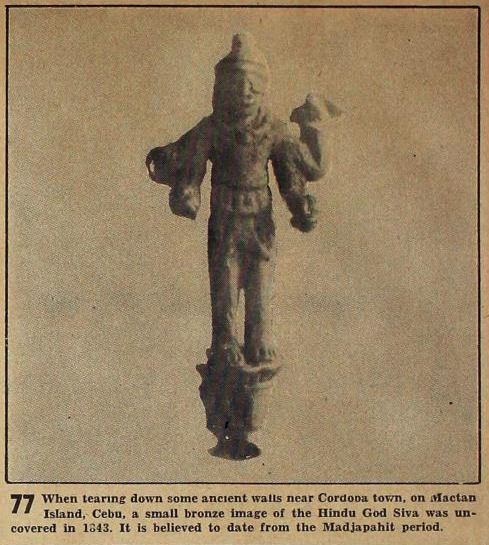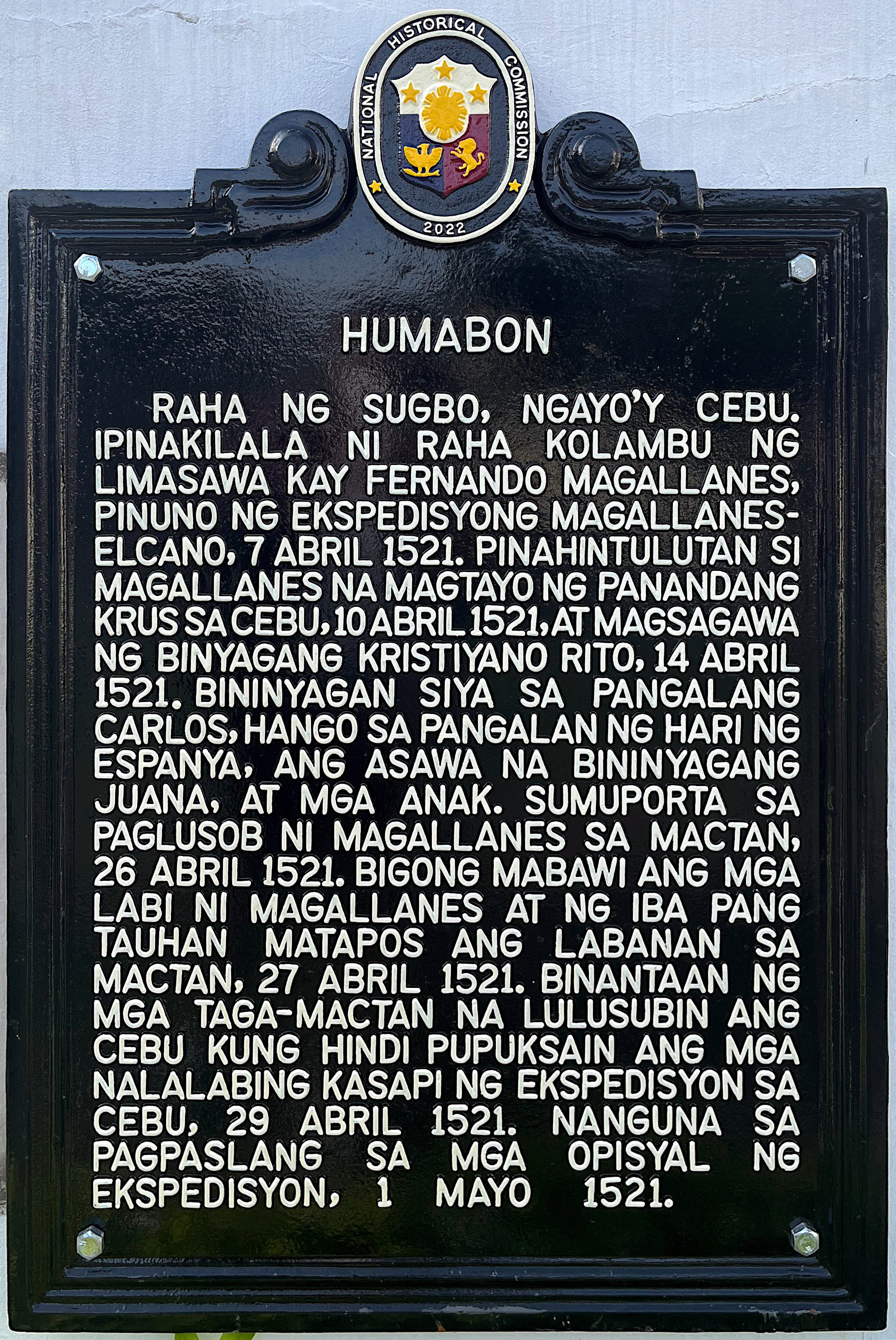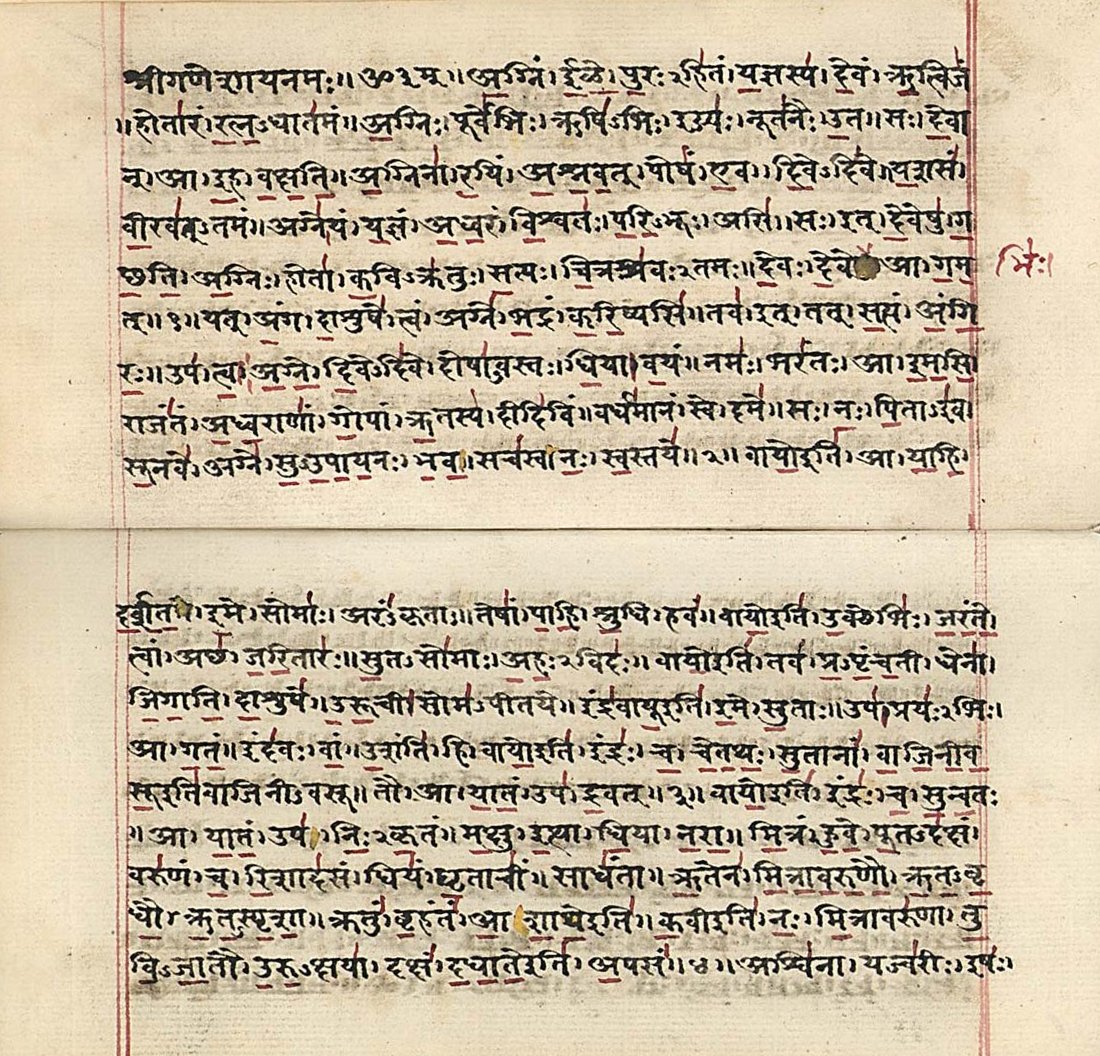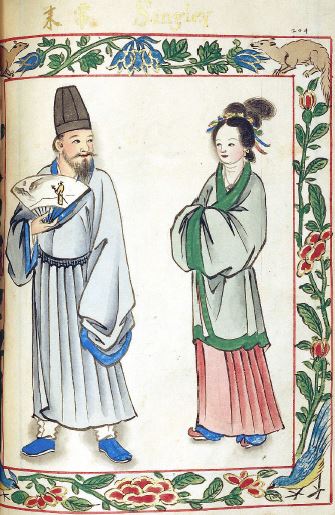|
Lapulapu
Lapulapu (floruit, fl. 1521) or Lapu-Lapu, whose name was first recorded as Çilapulapu, was a datu (chief) of Mactan, an island now part of the Philippines. Lapulapu is known for the 1521 Battle of Mactan, where he and his men defeated Spanish forces led by Portuguese explorer Ferdinand Magellan and his native allies Rajah Humabon and Datu Zula. Magellan's death in battle ended his Ferdinand Magellan#Voyage of circumnavigation, voyage of circumnavigation and delayed the Spanish occupation of the islands by over forty years until the expedition of Miguel López de Legazpi which reached the archipelago in 1565. Modern Philippine society regards him as the first Filipino hero because of his resistance to Spanish Empire, Spanish colonization. Monuments of Lapulapu have been built all over the Philippines to honor Lapulapu's bravery against the Spaniards. The Philippine National Police and the Bureau of Fire Protection use his image as part of their official seals. Besides bein ... [...More Info...] [...Related Items...] OR: [Wikipedia] [Google] [Baidu] [Amazon] |
Battle Of Mactan
The Battle of Mactan (; ) was fought on a beach in Mactan Island (now part of Cebu, Philippines) between Spanish forces led by the Portuguese explorer Ferdinand Magellan along with local allies, and Lapulapu, the chieftain of the island, on the early morning hours of April 27, 1521. Magellan, a Portuguese Empire, Portuguese-born commander serving the Spanish Empire who led an Magellan expedition, expedition that ultimately circumnavigated the world for the first time, commanded a small Spanish contingent in an effort to subdue Mactan under the Spanish crown. The sheer number of Lapulapu's forces, compounded with issues associated with the location and the armor, ultimately resulted in a disastrous defeat for the Europeans and the death of Magellan. Surviving members of Magellan's crew continued the expedition under the command of Juan Sebastian de Elcano, who completed the journey in September 1522. The battle's exact details are lost to history, with Antonio Pigafetta's accoun ... [...More Info...] [...Related Items...] OR: [Wikipedia] [Google] [Baidu] [Amazon] |
Ferdinand Magellan
Ferdinand Magellan ( – 27 April 1521) was a Portuguese explorer best known for having planned and led the 1519–22 Spanish expedition to the East Indies. During this expedition, he also discovered the Strait of Magellan, allowing his fleet to pass from the Atlantic into the Pacific Ocean and perform the first European navigation to Asia via the Pacific. Magellan was killed in battle in the Philippines and his crew, commanded by the Spanish Juan Sebastián Elcano, completed the return trip to Spain in 1522 achieving the first circumnavigation of Earth in history. Born around 1480 into a family of minor Portuguese nobility, Magellan became a skilled sailor and naval officer in service of the Portuguese Crown in Asia. King Manuel I refused to support Magellan's plan to reach the Moluccas, or Spice Islands, by sailing westwards around the American continent. Magellan then proposed the same plan to King Charles I of Spain, who approved it. In Seville, he married, fathere ... [...More Info...] [...Related Items...] OR: [Wikipedia] [Google] [Baidu] [Amazon] |
Lapu-Lapu City
Lapu-Lapu, officially the City of Lapu-Lapu (; ), is a highly urbanized city in the Central Visayas region of the Philippines. According to the 2020 census, it has a population of 497,604 people. It was formerly known as Opon, which was changed to its present name in 1961. It is one of the cities that make up Metro Cebu in the Philippines. It is located in the province of Cebu, administratively independent from the province, but grouped under Cebu by the Philippine Statistics Authority (PSA) and also the second most populous city of that province and in Central Visayas after the capital city of Cebu. The second busiest airport in the Philippines, Mactan–Cebu International Airport, is located in Lapu-Lapu City. It opened in 1966 and serves as a hub for Philippine Airlines, and as an operating base for Cebu Pacific and Philippines AirAsia. History In the 16th century, Mactan Island was colonized by Spain. Augustinian friars re-founded the town of Opon as a Christian tow ... [...More Info...] [...Related Items...] OR: [Wikipedia] [Google] [Baidu] [Amazon] |
Rajahnate Of Cebu
Cebu, also called Sugbu, informally referred to as the Rajahnate of Cebu, was an Indianized mandala (polity) monarchy on the island of Cebu in the Philippines prior to the arrival of the Spanish conquistadors. It is known in ancient Chinese records as the nation of Sokbu (束務) ( Hokkien) or Suwu ( Mandarin).SONG, MING, AND OTHER CHINESE SOURCES ON PHILIPPINES-CHINA RELATIONS By Carmelea Ang See. Page 74. According to Visayan oral legend, it was founded by Sri LumaySantarita, J. B. (2018). Panyupayana: The Emergence of Hindu Polities in the Pre-Islamic Philippines. Cultural and Civilisational Links Between India and Southeast Asia, 93–10 ... [...More Info...] [...Related Items...] OR: [Wikipedia] [Google] [Baidu] [Amazon] |
Rajah Humabon
Rajah Humabon (also ''Hamabao'' or ''Hamabar'' in other editions of the " First Voyage Around the World") later baptized as Don Carlos Valderrama, was one of the recorded chiefs in historic polity of Cebu who encountered Ferdinand Magellan in the 16th century. Humabon ruled at the time of the arrival of Portuguese-born Spanish explorer Ferdinand Magellan in the Philippines in 1521. Humabon, his wife, and his subjects were the first known Christian converts in the Philippines. However, since there were no Catholic priests in Cebu from 1521 to 1565, this Christianity was not practised until the return of the Spaniards to Cebu. There is no official record of Humabon's existence before the Spanish contact. The existing information was written by Magellan's Italian voyage chronicler, Antonio Pigafetta on Humabon and the indigenous Philippine peoples that existed prior to Spanish colonization. Rajah Humabon is cited as the reason for why Magellan fought in the Battle of Mactan, a ... [...More Info...] [...Related Items...] OR: [Wikipedia] [Google] [Baidu] [Amazon] |
Mactan
Mactan is a densely populated island located a few kilometers (~1 mile) east of Cebu Island in the Philippines. The island is part of Cebu province and it is divided into the city of Lapu-Lapu and the municipality of Cordova. The island is separated from Cebu by the Mactan Channel which is presently crossed by three bridges: the Cebu–Cordova Link Expressway (CCLEX), the Mactan–Mandaue Bridge, and the Marcelo Fernan Bridge. The island covers some and has a population of 527,071 as of 2020, making it the nation's most densely populated island. Along with Olango Island Group, the isles are administered by a city and a municipality covering . Mactan–Cebu International Airport is located on the island. Etymology The modern name Mactan descended from an earlier form, ''Manctan''. However, evidence of this earlier form is scant as, even as early as the 17th century, the island was already named Mactan. This form is attested in the original copy of the Philippine Dec ... [...More Info...] [...Related Items...] OR: [Wikipedia] [Google] [Baidu] [Amazon] |
Prudencio De Sandoval
Fray Prudencio de Sandoval (1553–1620) was a Spanish historian and Benedictine monk, the Bishop of Tuy from 1608 to 1612 and Bishop of Pamplona thereafter until his death. De Sandoval was born in Valladolid. He continued the chronicle begun by Florián de Ocampo and Ambrosio de Morales, and rather uncritically compiled a large collection of documents, making much use of Guevara y Mejía. His ''Historia de la vida y hechos del emperador Carlos V'' is a source of fundamental importance for the reign of Charles V, Holy Roman Emperor. His ''Historia de los reyes de Castilla y León'' or ''Historia de los cinco reyes'' (Pamplona: 1615) includes some documentary and epigraphic material now lost. He died in Pamplona Pamplona (; ), historically also known as Pampeluna in English, is the capital city of the Navarre, Chartered Community of Navarre, in Spain. Lying at near above sea level, the city (and the wider Cuenca de Pamplona) is located on the flood pl ..., and his last ... [...More Info...] [...Related Items...] OR: [Wikipedia] [Google] [Baidu] [Amazon] |
Sanskrit
Sanskrit (; stem form ; nominal singular , ,) is a classical language belonging to the Indo-Aryan languages, Indo-Aryan branch of the Indo-European languages. It arose in northwest South Asia after its predecessor languages had Trans-cultural diffusion, diffused there from the northwest in the late Bronze Age#South Asia, Bronze Age. Sanskrit is the sacred language of Hinduism, the language of classical Hindu philosophy, and of historical texts of Buddhism and Jainism. It was a lingua franca, link language in ancient and medieval South Asia, and upon transmission of Hindu and Buddhist culture to Southeast Asia, East Asia and Central Asia in the early medieval era, it became a language of religion and high culture, and of the political elites in some of these regions. As a result, Sanskrit had a lasting effect on the languages of South Asia, Southeast Asia and East Asia, especially in their formal and learned vocabularies. Sanskrit generally connotes several Indo-Aryan languages# ... [...More Info...] [...Related Items...] OR: [Wikipedia] [Google] [Baidu] [Amazon] |
Mestizo De Sangley
Sangley (English plural: ''Sangleys''; Spanish plural: ''Sangleyes'') and Mestizo de Sangley (Sangley mestizo, ''mestisong Sangley'', ''chino mestizo'' or Chinese mestizo) are archaic terms used in the Philippines during the Spanish colonial era to describe respectively a person of pure overseas Chinese ancestry and a person of mixed Chinese and native Filipino ancestry. The Sangley Chinese were ancestors to both modern Chinese Filipinos and modern Filipino mestizo descendants of the ''Mestizos de Sangley,'' also known as Chinese mestizos, which are mixed descendants of Sangley Chinese and native Filipinos. Chinese mestizos were ''mestizos'' (mixed peoples) in the Spanish Empire, classified together with other Filipino mestizos. The Spanish had such categories as indios ( for natives of the East Indies), (descendants of colonial ethnic Spanish and native-born Filipinos), the ''tornatrás'' (Spanish-Chinese mestizos, descendants of colonial Spanish Filipinos and Sangley Ch ... [...More Info...] [...Related Items...] OR: [Wikipedia] [Google] [Baidu] [Amazon] |
Honorific
An honorific is a title that conveys esteem, courtesy, or respect for position or rank when used in addressing or referring to a person. Sometimes, the term "honorific" is used in a more specific sense to refer to an Honorary title (academic), honorary academic title. It is also often Conflation, conflated with systems of Honorifics (linguistics), honorific speech in linguistics, which are grammatical or morphology (linguistics), morphological ways of encoding the relative social status of speakers. Honorifics can be used as prefixes or suffixes depending on the appropriate occasion and presentation in accordance with Style (form of address), style and Convention (norm), customs. Typically, honorifics are used as a Style (manner of address), style in the grammatical third Grammatical person, person, and as a form of address in the second person. Some languages have anti-honorific (''despective'' or ''humilific'') first person forms (expressions such as "your most humble servant" ... [...More Info...] [...Related Items...] OR: [Wikipedia] [Google] [Baidu] [Amazon] |
Carlo Amoretti
Carlo Amoretti (born 16 March 1741 in Oneglia, now part of Imperia – died 23 March 1816) was an ecclesiastic, scholar, writer, and scientist. He entered the Augustinian order in 1757. To further his studies, he went to Pavia and Parma where he also taught ecclesiastical law and he perfected his knowledge of ancient languages (Latin, Greek, Hebrew) and modern ones (French, English, German, Spanish). Wide-ranging intellect Amoretti was an Encyclopedist whose mind encompassed theology, physics, geology, paleography, geography, and art history. He translated scientific works, published or republished many rare books and manuscripts noteworthy of these being the extant codex of Antonio Pigafetta's relation of the first circumnavigation of the world by Ferdinand Magellan's fleet. Amoretti, having fallen from the graces of the ecclesiastical order at Parma, was forced to relocate to Milan around 1771. Here he became an active member of the scientific community. He was editor of t ... [...More Info...] [...Related Items...] OR: [Wikipedia] [Google] [Baidu] [Amazon] |
Antonio De Morga
Antonio de Morga Sánchez Garay (29 November 1559 – 21 July 1636) was a Spanish soldier, lawyer and a high-ranking colonial official for 43 years, in the Philippines (1594 to 1604), New Spain and Peru, where he was president of the Real Audiencia for 20 years. He was also a historian. After being reassigned to Mexico, he published the book '' Sucesos de las islas Filipinas'' in 1609, considered one of the most important works on the early history of the Spanish colonization of the Philippines. As deputy governor in the Philippines, he restored the ''audencia.'' He took over the function of judge or ''oidor''. He also took command of Spanish ships in a 1600 naval battle against Dutch corsairs, but suffered defeat and barely survived. His history was first published in English in 1868; numerous editions have been published in English, including a 1907 edition. It has also been reprinted in Spanish and other languages. Education and service in the Philippines Antonio de Morga ... [...More Info...] [...Related Items...] OR: [Wikipedia] [Google] [Baidu] [Amazon] |








